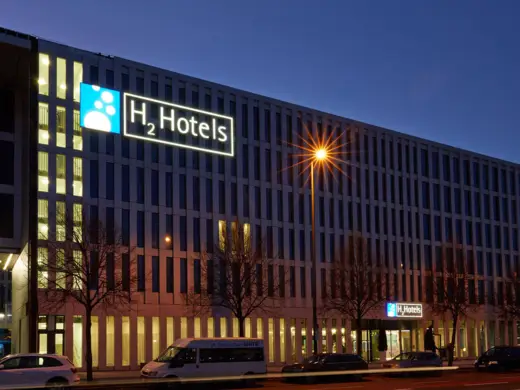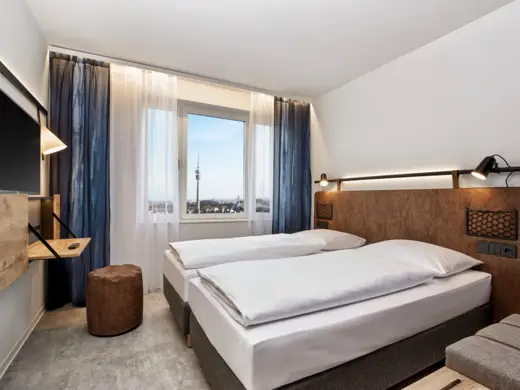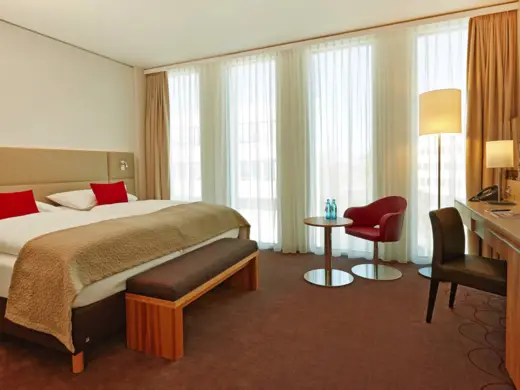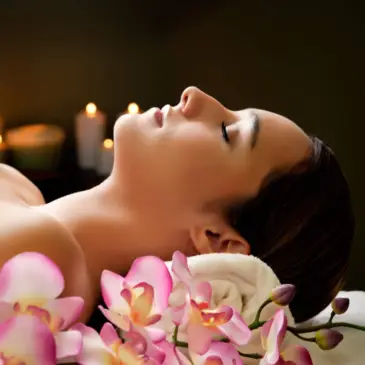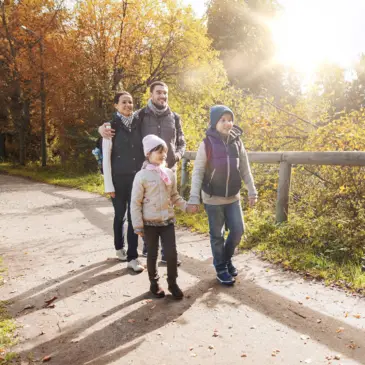City break Munich — between tradition and lifestyle | H-Hotels.com
During a trip to Munich, you will experience this Bavarian city in all its variety. You can visit important sights (such as the Olympiapark or Frauenkirche) and enjoy a great time in the numerous beer gardens. The Pinakothek museums are among the destinations that are famous all over the world and a real magnet for visitors. A city break in Munich allows you to enjoy the famous Bavarian attitude to life, which combines tradition with a cosmopolitan outlook.
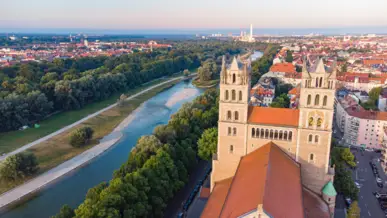
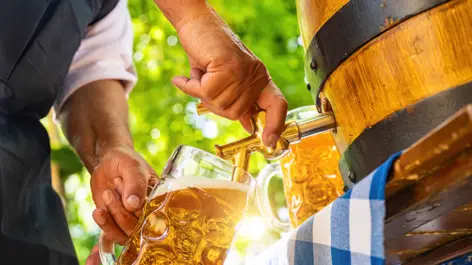
It is worth making a trip to Munich at any time of year. In spring the best place to enjoy the first warm rays of sunshine is in the English Garden. A tempting option in summer is to relax on the Isar river. Needless to say, if you are visiting Munich in late September, a visit to Oktoberfest is essential. A pleasant option in December is to spend some time at Munich’s Christmas market (Münchner Christkindlmarkt).
Get to know and love the city of Munich. Our guide for your holiday or city break in Munich suggests a range of sightseeing highlights. You will discover the best places to go shopping and how to explore the city from a new perspective.
Discover Munich – book Munich hotels now at unbeatable prices!
Find top hotels in Munich – at guaranteed best prices!
City break Munich: what are the must-see attractions?
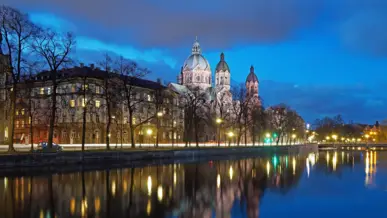
Are you spending two, three or four days in Munich and want to get to know this city on the Isar river better during your stay? There are some wonderful sights in Munich that you should include in your city sightseeing schedule. The most important tourist attractions for a city break in Munich are presented here for you.
Frauenkirche
The “Dom zu Unserer Lieben Frau” (to give its official name) is one of Munich’s most important landmarks. The church was built in the 15th century. Its two towers are particularly imposing and can be seen from a long way away. Each one is topped with a bulbous cupola, a defining stylistic feature of the Frauenkirche. This monumental building has a transept that is 109 metres long and 40 metres wide. The Frauenkirche can accommodate around 20,000 people. A real highlight awaits you inside. The devil’s footprint can be found in the entrance hall.
Our tip: the Frauenkirche’s impressive acoustics are best enjoyed during an organ recital or choral concert. Check the church’s events information, which you will need to consult before you even start your trip.

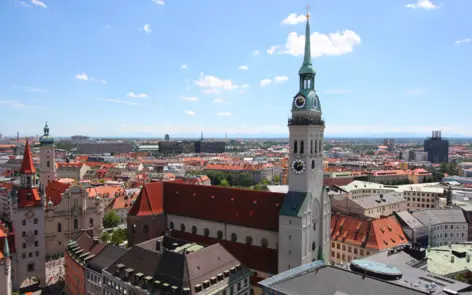
Alter Peter
Your trip to Munich should include a visit to the “Alter Peter” parish church. This is the oldest of its kind in the whole city. It also has the oldest bells in Munich. Some of these were made as early as the 14th century. The high altar from the Baroque period is particularly impressive. As is typical of this era, the altar is highly ornate with lots of details.
While you are visiting Alter Peter, you can also see the relics of Saint Munditia. The skeleton is in a glass casket decorated with gold. You can also climb the church tower at Alter Peter. But more about that later.
Hofbräuhaus am Platzl
Delicious pork knuckle, exquisite beer, live brass bands and a unique atmosphere: all of this is typical of the Hofbräuhaus in Munich. This is one of the city’s genuine institutions and is a veritable magnet for visitors. Various facilities are on offer at the world’s most famous tavern. The Festsaal ceremonial hall has space for up to 650 guests.
But the heart of the Hofbräuhaus is the bar, which is found on the ground floor. With a capacity to welcome up to 1,300 guests, the bar has plenty of room for sociable gatherings. You can enjoy delicious Bavarian specialities along with traditional Bavarian music. Make sure you plan a visit to this Munich institution during your trip.
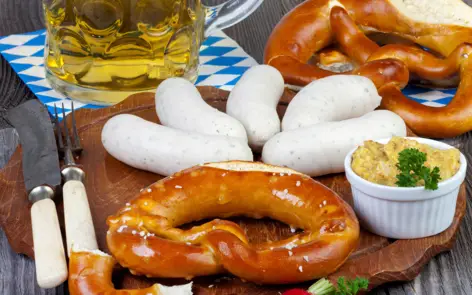
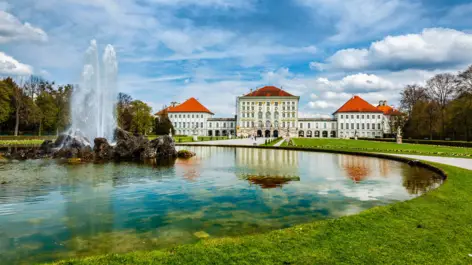
Schloss Nymphenburg
Roughly 300,000 people visit the magnificent Schloss Nymphenburg each year. It is situated in the west of the Bavarian regional capital and is one of the largest royal palaces in Europe. The palace was built in the 17th century, and for a long time it functioned as a summer residence for the famous House of Wittelsbach dynasty. As a visitor, the palace allows you to immerse yourself in the pomp and splendour of that period. The Stone Hall in the central pavilion is a genuine highlight.
A glance upwards reveals a wonderful ceiling fresco. Various museums are housed at the palace. Around Schloss Nymphenburg you will find the Schlosspark Nymphenburg. A walk through these magnificent gardens is like a short holiday in itself, and a guaranteed way to relax during your city break.
Hellabrunn Zoo
Hellabrunn Zoo (Tierpark Hellabrunn) is over 100 years old and covers an area of more than 40 hectares. During your trip there you can get to know 740 animal species from every continent. The zoo also has a large aquarium. The jungle house provides a home for various kinds of apes. This centre for the protection of endangered species allows visitors to learn about various projects happening in this area.
Over the last few years, the zoo has been transforming into a “Geo zoo”. This is focused on biodiversity and the conservation of endangered species. Rather than thinking about each species in isolation, the aim is to allow people to experience the interplay between species in their habitats on different continents. Book your tickets in advance online and avoid the long weekend queues at the ticket office.
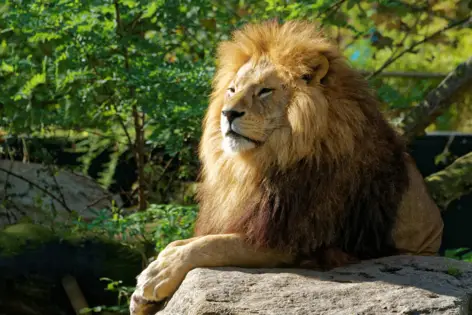
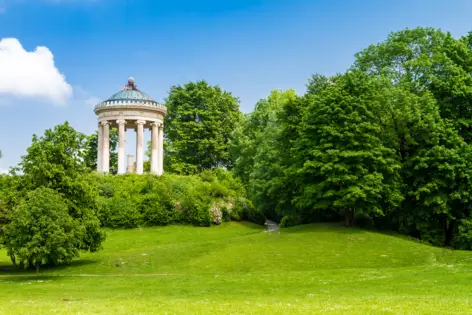
English Garden
The English Garden is a key reference point for locals and visitors alike. A visit here is an essential part of any trip to Munich. As the name suggests, the garden is modelled on the English landscape gardens of the 18th century. With a total area of around 375 hectares, the English Garden in Munich is one of the world’s largest green spaces. One of the waterways flowing through the park is the Eisbach.
The park also contains some important buildings that are very famous too. A good example is the Chinese Tower. This is where one of Munich’s largest beer gardens opens its gates. When it is really packed, there is room for 7,000 people. Since 1972, the Japanese Tea House has been another magnet for visitors. This is a symbol of the city’s twinning arrangement with Sapporo. The associated monopteros (circular temple) is on a hill. From there you get wonderful views over the English Garden and the city of Munich.
Olympiapark
In 1972, Munich hosted the Olympic Games. The organisers built a gigantic Olympic village at Oberwiesenfeld as well as several sports venues and other facilities. The area extends over roughly 85 hectares. At the centre is the Olympiastadion, which was used as FC Bayern Munich’s home ground until 2005.
Today, the Olympiapark is Munich’s main events centre. In addition to international sporting events, it hosts concerts and religious services with thousands of attendees. This is another option for your Munich city break: combine a short trip with an exciting event. In addition to the stadium, the Olympiapark has the Olympiahalle arena and the Olympic swimming pool.
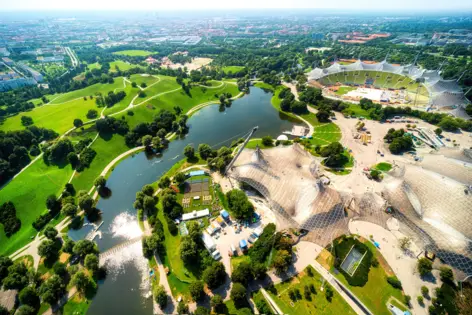
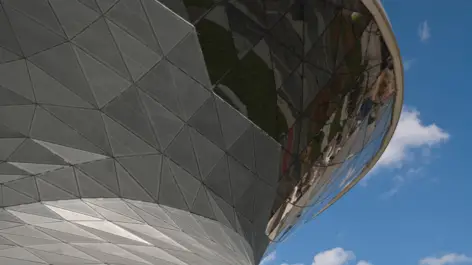
BMW Welt
Right next to the Olympiapark is the modern exhibition and event centre BMW Welt. Since 2007, this is where BMW has presented genuine classic cars and new models. Everything at BMW Welt revolves around the topics of technology and innovation. The building complex also accommodates the top-quality restaurant “EssZimmer”.
Where do you get the best views of Munich?
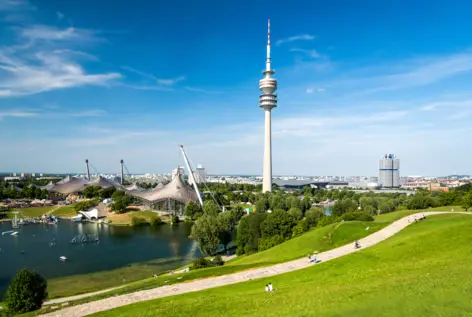
No trip to Munich is complete without enjoying the city skyline against the alpine panorama. Munich’s television tower (also known as the Olympiaturm) is in the midst of the Olympiapark. It measures 291 metres, which makes it one of Bavaria’s tallest buildings. The tower was inaugurated in 1968 and contains three different observation decks and a restaurant. The lift brings visitors swiftly up to a height of 185 metres. This involves travelling at a speed of seven metres per second. From up here, you have a fantastic view over the entire city and the Alps.
To reach the viewing platform in the church tower at Alter Peter, you first have to climb 300 steps. But it is worth the effort. From the top you have wonderful views over the famous Viktualienmarkt and, in fine weather, as far as the Alps. What’s more, the route up the tower takes you past the belfry.
The Neues Rathaus (built in 1905) also has an interesting viewing gallery. This is in the tower on the city hall and is easily 85 metres high. You can enjoy varied views over Marienplatz and Munich’s old town. And there is no need to climb any stairs to reach the viewing gallery. Two lifts offer easy access to the top.
Theresienwiese is mainly known as the fairground location during Oktoberfest. Throughout the year, the Bavaria statue watches over the festival site. This bronze statue is about 18 metres high and is one of the city’s key landmarks. In the head of the statue there is even a viewing platform, which makes Bavaria a popular attraction with tourists. The platform is reached via a spiral staircase. From the top, you will be amazed at the bird’s eye view over Theresienwiese. Important: during Oktoberfest, there may be long queues for the Bavaria statue. From mid-October until the end of March, Bavaria is closed to the public.
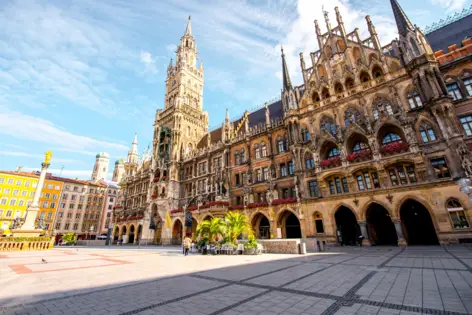
The best museums in Munich — don’t miss out!
Munich has a large and very varied museum landscape, which you can explore during your trip to the Bavarian capital. Some of these are among the most important museums in the whole of Germany and also have an international profile.
With an exhibition area of 25,000 square metres, the Deutsches Museum (German museum) in Munich is the largest in the world. As a result, even a whole day is not enough to explore the entire museum. If you do not want to spend the whole of your time in Munich in this museum (which would be entirely conceivable), you should focus on specific areas for your visit and seek out particular sections to explore. The museum itself is all about technology and science. There are various exhibition areas. Among the best known is definitely the aerospace exhibition (reopened in 2020).
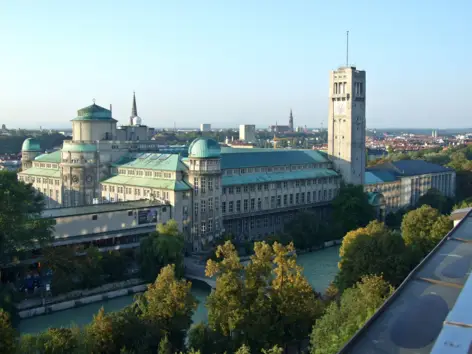
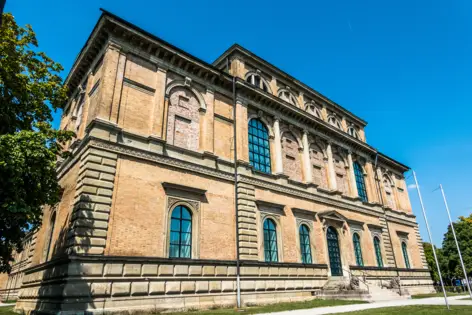
The Pinakothek museums are entirely devoted to art. The museum consists of three different galleries (Alte Pinakothek, Neue Pinakothek and Pinakothek der Moderne), which we highly recommend for your trip to Munich. The Alte Pinakothek displays around 700 paintings by well-known artists. The focus here is on the Old Masters up to the late 18th century. So you will find famous works by Dürer, Rembrandt and da Vinci.
The Neue Pinakothek offers an overview of artworks from the 18th and 19th centuries. This includes artists such as van Gogh and Renoir. However, due to extensive renovation work the Neue Pinakothek is closed until 2025. The collection at Pinakothek der Moderne, on the other hand, concentrates on the art of the 20th century and contemporary pieces.
In the 19th century, Ludwig I of Bavaria built the Glyptothek on Königsplatz in Munich. Today, the Glyptothek still exhibits antique sculptures. This is also the city’s oldest museum that is open to the public. A visit to the Glyptothek is a special experience. This is the only museum in the world that exclusively contains antique sculptures.
At Schloss Nymphenburg you will find interesting museums in addition to the magnificent and ornate rooms. The Schloss Museum Nymphenburg is home to the Marstallmuseum. The exhibits here include one of the most important collections of coaches in the world. The exhibition has a total of over forty coaches from three different centuries. A genuine highlight is the 18th century coronation carriage used by Kaiser Karl VII. On the first floor of the Marstallmuseum you will also find an absolutely fascinating porcelain collection.
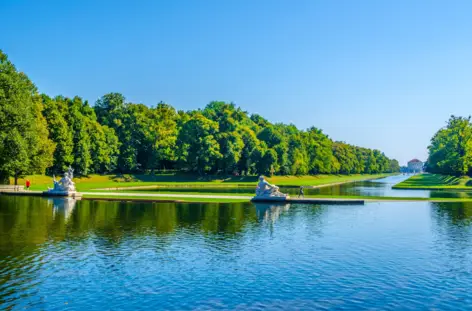
World-famous and legendary: the Munich Oktoberfest
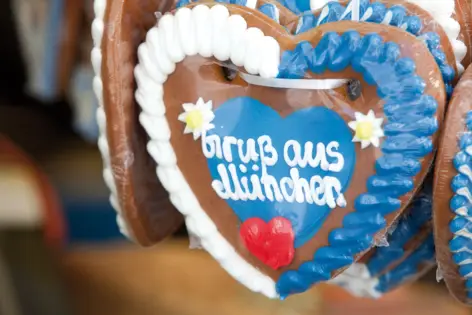
“Munich’s meadows are undoubtedly among its most beautiful assets.” This was recognised by the famous Munich lyricist Eugen Roth, who had close associations with the Bavarian capital during his life. The largest public festival in the world takes place annually between late September and early October, with the first event going back to 1810. For many years now, Oktoberfest has been attracting both German and international visitors. Probably the event’s biggest attraction are the giant marquees run by various breweries.
Each tent has space for thousands of people. Oktoberfest traditionally begins with the tapping of a barrel by the Mayor of Munich on the dot of 12 o’clock one Saturday. Before this, the arrival of the Oktoberfest hosts is an early highlight. Only once the barrel has been tapped can beer be served throughout the festival area (preferably in a beer stein). Another highpoint is the Oktoberfest parade “Trachten- und Schützenumzug”, which takes place on the second day of the festival and makes its way through Munich.
Our tips: make sure you book your hotel early if you want your city break to coincide with Oktoberfest. If you want to experience Oktoberfest in one of the big marquees, you will need to book a table in advance. Unless you have a reservation, you will not be able to get into the tent.

Shopping in Munich — there is something for every taste here
Munich is a veritable shopping paradise, with something to offer whatever your shopping preferences. You can amble through the Bavarian capital on a luxury shopping trip at elegant boutiques or find the perfect bargain at various second-hand shops. Lots of city breaks in Munich are booked exclusively for the shopping experience.
The central pedestrian area in Munich is along Kaufingerstraße and in Neuhauser Straße. The classic shopping street offers a wide and diverse choice of retail outlets. There are also several landmarks, such as Karlsplatz or the Marienkirche, which are very close to the pedestrian area. Why not combine your day’s shopping with a visit to one or two tourist attractions?


The Stachus Passagen are immediately below Karlsplatz. This shopping precinct is the largest underground shopping centre in Europe. Over an area of roughly 7,800 square metres, you will find boutiques, restaurants and the finest Munich chocolate. Some of the shops belong to larger chains. But young fashion labels also have outlets here.
Sendlinger Straße, which has recently become completely car-free, offers a very special shopping experience. There are little shops, boutiques and all sorts of cafés. Sendlinger Straße has an impressively relaxed ambience, which is perfect for sauntering and shopping.
A modern shopping centre can be found in Hanauer Straße. This is very close to the Olympiapark, which explains its name “Olympia Einkaufszentrum”. This shopping centre opened in 1972 and has been extended and modernised since the 1990s. 135 shops are currently located in the Olympia Einkaufszentrum.
Popular Munich city squares with Bavarian charm

Viktualienmarkt
City-centre squares are often both an attraction in their own right and a place to meet. This is certainly true for Munich’s best-known squares, such as the Viktualienmarkt, Marienplatz and Karlsplatz. The city has beautiful squares that bring people together and also reveal its history.
The Viktualienmarkt is undoubtedly one of the most famous squares in the Bavarian capital. For over 200 years, traders have been selling vegetables, fruit, Weißwurst, spices, cheese and lots of other delicious items here. You will sense the special atmosphere immediately when you visit during your trip to Munich. Let yourself be carried along and just enjoy the huge range of products on offer at this daily market. If you happen to be in Munich the day before Ash Wednesday, a visit will be even more worthwhile. On Shrove Tuesday, the market women invite people to join their traditional dance.
Marienplatz is Munich’s central square. It is located right by the Neues Rathaus (New Town Hall) in the old town. Marienplatz was already an important hub when the city was founded in the 12th century. All sorts of events continue to take place there today. The celebrations to mark league, cup and Champions League triumphs by FC Bayern Munich are certainly legendary, and these alone entice lots of fans to take a trip to Munich.
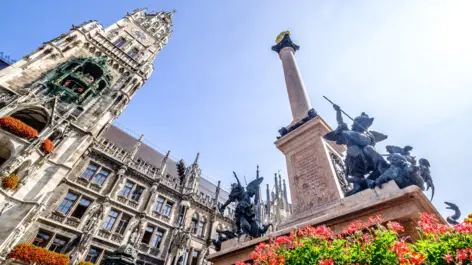

Karlsplatz
From the central Karlsplatz you have a fantastic panoramic view over various buildings, such as the Justizpalast (Palace of Justice) or the famous Karlstor (the old Munich city gate). At Karlsplatz (also known as Stachus) there is an equally vibrant atmosphere during the day and at night. This is partly due to its status as a central hub in the public transport network. Stachus is also the transition point between the city centre and the pedestrian area, which you reach as soon as you go through the Karlstor.
Königsplatz in the Maxvorstadt district is an architectural treat to behold. This is thanks to the buildings which have a classical or even ancient appearance. A good example is the Glyptothek. In summer, large numbers of locals and tourists can be found sunbathing on the grass in Königsplatz. This is also a venue for lots of different events. There are various cafés where you can pleasantly spend some time.

Königsplatz
City break to Munich: facts about the Bavarian capital
Munich’s eventful history goes back to the 12th century. There are lots of places where you can explore the traces of this historic past during your trip. An excellent starting point is the Munich City Museum (Münchner Stadtmuseum).
With over 1.471 million inhabitants, Munich is the third largest city in Germany. The Munich metropolitan area covers a total of 310 kilometres square and is divided into 25 districts. Among the best-known districts are undoubtedly Maxvorstadt, Schwabing and Sendling.
Lot of events take place all year round in Munich. In addition to the Oktoberfest in autumn, there are the home matches played by FC Bayern Munich in the Allianz Arena. The Tollwood Winterfestival on the Theresienwiese is one of the definite winter highlights.

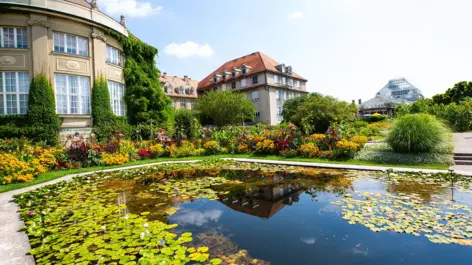
Munich is also a very green city. The Iser is the main river, flowing over almost 14 kilometres through the city. Along the river there are various options for enjoying a relaxing day’s bathing. A good example is the Isarstrand beach at Flaucher. The Botanical Gardens are right next to Schlosspark Nymphenburg and cover an area of over 21 hectares.
The Bavarian capital has a cosmopolitan outlook and welcomes visitors from all over the world. Munich offers an almost unrivalled combination of tradition, international character and a contemporary feel. In 2018 alone, there were over 17 million overnight stays.
In addition to the Oktoberfest, Munich is known for its many beer gardens. Not for nothing is it referred to as the “city of a thousand beer gardens”. Weißwurst in the morning, beer in the evening - experience the relaxed vibe on your city break in Munich.
Some famous people were born in Munich. These include Philipp Lahm (1983), Barbara Schöneberger (1974), Moritz Bleibtreu (1971), Michael „Bully“ Herbig (1968), Franz Beckenbauer (1945), Richard Strauss (1864) and Franz Marc (1880).
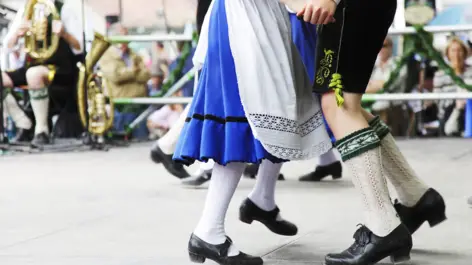
Arriving in Munich

You can start your trip to Munich by plane, car or train. The Franz Josef Strauß airport is about 28 kilometres to the north-east of the city. With over 46 million passengers, this is one of Europe’s most important transport hubs. As you would expect, there are a large number of national and international flight connections. The S-Bahn lines 1 and 8 take you quickly from the airport into the city centre.
Lots of interregional trains stop at Munich's main station (Hauptbahnhof), coming from all over Germany and the rest of Europe. The Hauptbahnhof has a central location, to the west of the city centre, and has its own underground station. If you are arriving by train, there are convenient bus and S-Bahn options to take you on to other locations in Munich.
By car, Munich is reached via various motorways. The most important connections include the A8 (Karlsruhe – Salzburg) and A9 (Munich – Berlin).


